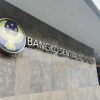Orthobiologics are substances that orthopedic surgeons use to help injuries heal more quickly. They contain cellular and tissue-based components that harness the body’s natural healing abilities to repair bone, cartilage, tendons, ligaments, and other connective tissues. They are a major component of the emerging field of regenerative medicine and stem cell therapies.
Orthobiologics can enhance the healing capacity of a patient’s body and help avoid invasive surgery. They can be an effective solution for many orthopedic problems, from damaged cartilage to fractures. Their regenerative properties make them a promising alternative to long recovery times and potential complications of traditional orthopedic surgery.
Some of the notable factors strengthening the orthobiologics industry outlook include:
An aging population and a rise in musculoskeletal conditions like osteoarthritis and spinal disorders.
Increased cases of sports injuries and road accidents requiring bone grafts and regeneration.
Greater focus on active lifestyles and fitness leading to more joint pains and injuries.
Advancements in biologics and regenerative medicine therapies.
Strong preference for minimally invasive orthopedic procedures.
Favorable reimbursement policies and healthcare infrastructure improvements.
The global orthobiologics market value is expected to surpass USD 11.4 billion by 2032, with a rising prevalence of bone and joint disorders, the growth of sports injuries, and the demand for advanced treatments.
Role of Orthobiologics in Orthopedic Surgery
Orthobiologics are bound to play a major role in orthopedic surgery and care, as they are used to help repair bone, heal soft tissue injuries, aid recovery in sports medicine, and treat spinal disorders. Certain orthobiologics contain growth factors that stimulate the proliferation and differentiation of bone cells to speed up the formation of new bone tissue and help fractures heal faster.
For instance, using bone morphogenetic proteins (BMPs) after a fracture can reduce healing time by a considerable amount. Bone grafts often don’t fully integrate due to poor vascularization. In 2023, BMP products held over 9.4% share in the global orthobiologics industry, denoting a significant role of the segment in boosting the outcome of orthopedic surgeries.
Orthobiologics are crucial in soft tissue healing, including the improvement of ligament and tendon repair, regeneration of cartilage, and reducing pain and inflammation. Ligaments and tendons have limited healing potential due to their poor vascularity. Orthobiologics like PRP can stimulate local tissue to promote healing. The New Zealand Government had stated that in 2022, over 65% of work-related injury claims were soft-tissue injuries, including tendon and ligaments.
For cartilage regeneration, cell-based therapies using chondrocytes or mesenchymal stem cells (MSCs) are promising. Several orthobiologic like hyaluronic acid derivatives are used to reduce inflammation and pain, since they act as lubricants and shock absorbers within joints, providing symptomatic relief.
Adoption of Stem Cell-based Treatments:
Mesenchymal stem cells (MSCs) have emerged as a promising tool for orthopedic applications. MSCs can differentiate into bone, cartilage, tendons, and ligaments. They are suited to treat injuries, osteoarthritis, and degenerative disc disease. Ongoing research efforts across the globe are exploring optimized MSC delivery methods.
Multiple Sclerosis (MS), affecting over 1.8 million people globally, is primarily known as an immune-mediated disease of the central nervous system, but it does have a significant relationship with orthopedic problems. The impact of MS on the musculoskeletal system can lead to several orthopedic concerns, primarily through its effect on mobility and bone health.
In a groundbreaking interim analysis presented at the ACTRIMS Forum 2024, intrathecal injections of autologous MSCs displayed promising effects on patients with progressive multiple sclerosis. The stem cell therapy proved safe and well-tolerated with no serious adverse events, although some patients did report temporary headaches and back pain. Those in the initial study demonstrated significant improvements, including a 58.6% no evidence of disease activity rate for the intrathecal group after one year.
Growing Demand for Viscosupplementation:
Viscosupplements, an important segment in the orthobiologics industry, are injectable hyaluronic acid products providing lubrication and cushioning for arthritic joints. They are often used as an alternative to steroid injections for diseases such as knee osteoarthritis. Their ability to restore joint biomechanics makes them an appealing option. As per the WHO, nearly 365 million people around the world suffer from knee osteoarthritis, indicating the considerable scope for treatment options.
BioSenic, at the OARSI World Congress 2024, highlighted the safety and efficacy of its next-generation intra-articular viscosupplement treatment JTA-004. In an incisive post-hoc analysis of the Phase 3 KOA-2 trial, finalized in 2019, the JTA-004 emerged as a discerning viscosupplement treatment for a targeted knee osteoarthritis subpopulation. For the orthobiologics market, such developments imply the potential for segmented treatment strategies and personalized patient care.
Minimally Invasive Procedures Using Orthobiologics:
The demand for minimally invasive procedures has been increasing due to several factors. These include smaller incisions, less post-operative pain, quicker recovery times, and a growing body of research supporting the efficacy and safety of minimally invasive surgeries. Orthobiologics like PRP and stem cells can often be delivered via injections rather than surgery, bolstering the orthobiologics market outlook.
Patients are drawn to these injection-based procedures due to the benefits like reduced risks and recovery times. Conditions treated with stem cell therapy can range from chronic joint pain, and osteoarthritis, to injuries in soft tissues such as ligaments and tendons. The U.S. CDC reports that every year the cost of lost wages and healthcare spending due to arthritis is more than USD 300 billion across the country, where osteoarthritis is the most common arthritis form.
Potential of Orthobiologics in Spinal Applications:
Orthobiologics can play an important role in treating spinal disorders and injuries. One key application is in treating degenerative disc disease (DDD). DDD is when the discs between the vertebrae break down, causing back pain and other symptoms. Orthobiologics like stem cells and growth factors can be injected into damaged discs to help regenerate and repair them. These solutions are also being studied as a non-surgical option for managing chronic back pain, which is one of the most common reasons for disability worldwide.
Orthobiologics are also being used to improve outcomes of spinal fusion surgery. Spinal fusion permanently connects two or more vertebrae using bone grafts and implants. However, up to 40% of patients may not achieve complete pain relief or functional improvement from spinal fusion surgery alone. Using orthobiologics like bone morphogenetic protein along with bone grafts helps increase the chances of successful fusion and better clinical outcomes.
For instance, in May 2023 U.K.-based Locate Bio confirmed that the U.S. FDA gave its LDGraft solution a breakthrough device designation for DDD patients. The bone graft technology will release osteoinductive recombinant human bone morphogenetic protein 2 (rhBMP-2), which is a protein driving cell differentiation and bone formation. The product is a prime example of consistent investments in addressing chronic issues among patients having limited treatment options.
Implications in Sports Medicine:
Orthobiologics will be used in sports medicine to help athletes recover from injuries. Regenerative treatments can be used to tackle many common sports injuries, get players back on the field quicker, and reduce the risk of re-injury. Some of the most common sports injuries that can benefit from orthobiologics include ACL and other knee ligament tears, rotator cuff tears, Achilles tendon tears, tennis elbow, and cartilage damage, among others.
Last year, Tetrous announced that it has completed surgeries with its EnFix RC solution, which is a procedure-specific implant designed for rotator cuff repair. The introduction of the EnFix RC device is significant for the field of sports medicine as it may offer a more effective treatment option for athletes undergoing rotator cuff repairs, align with the increasing trend towards less invasive treatments, and potentially improve recovery times and outcomes.
Overall, orthobiologics are providing promising alternatives to prolonged rehab or surgery for many sports injuries. Their ability to expedite healing makes them invaluable for helping athletes get back on the field as quickly and safely as possible.
The future outlook for orthobiologics remains very promising. As technology advances, we are likely to see continued innovation in this field. New treatments will emerge that can harness the regenerative powers of the patient’s tissues and cells. While more research is still needed, orthobiologics are already demonstrating their effectiveness in orthopedic applications. Their ability to aid bone and soft tissue healing while being less invasive makes them an important tool for many orthopedic surgeons and specialists.
Patients with injuries, chronic pain, or degenerative conditions may continue to benefit from these cutting-edge biological treatments going forward. However, there are still challenges around standardization, regulation, and clinical data to be addressed. Ensuring the safety, quality, and efficacy of new treatments will be important as the field expands. With the promise of improving outcomes, faster healing, and the possibility of avoiding surgeries, the utilization of orthobiologics will expand at a steady pace.





















